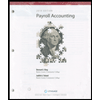The scenario describes a task undertaken by Adam, the managing partner at Novak Accounting Services (NAS), who is assessing the profitability of the firm’s three operational divisions: Audit, Tax, and Advisory Services. These divisions receive support from three separate departments: Billing, Human Resources (HR), and IT. Each support department incurs specific costs and serves the operating divisions based on distinct cost drivers or allocation bases. Here are the details: •The Billing Department has incurred original costs of $66,000 but does not record any specific billing hours used by the operating divisions. •The Human Resources Department has expenses amounting to $113,000 and houses two employees. •The IT Department shows costs of $98,000 and has its services measured in hours used by various departments, totaling 200 hours for itself and distributing additional hours to the operating divisions—900 hours to Audit, 600 hours to Tax, and 300 hours to Advisory. For the operating divisions: •The Audit Division, which utilizes 2,000 billing hours, has 12 employees and uses the most IT hours. •The Tax Division uses 1,400 billing hours, employs the most staff at 15, and utilizes 600 IT hours. •The Advisory Division, being the smallest, uses 600 billing hours, has three employees, and uses 300 IT hours. The total costs attributed to the operating divisions before any internal cost allocations are $528,000 for Audit, $811,000 for Tax, and $315,000 for Advisory, summing up to $1,931,000. Adam’s challenge is to allocate the costs from the support departments to the operating divisions based on appropriate metrics like employee headcount and IT and billing hours, thereby determining the true profitability of each division. “Rank the three support departments based on the percentage of their service provided to other support departments, and then allocate their costs using the step method.
The scenario describes a task undertaken by Adam, the managing partner at Novak Accounting Services (NAS), who is assessing the profitability of the firm’s three operational divisions: Audit, Tax, and Advisory Services. These divisions receive support from three separate departments: Billing, Human Resources (HR), and IT. Each support department incurs specific costs and serves the operating divisions based on distinct cost drivers or allocation bases.
Here are the details:
•The Billing Department has incurred original costs of $66,000 but does not record any specific billing hours used by the operating divisions.
•The Human Resources Department has expenses amounting to $113,000 and houses two employees.
•The IT Department shows costs of $98,000 and has its services measured in hours used by various departments, totaling 200 hours for itself and distributing additional hours to the operating divisions—900 hours to Audit, 600 hours to Tax, and 300 hours to Advisory.
For the operating divisions:
•The Audit Division, which utilizes 2,000 billing hours, has 12 employees and uses the most IT hours.
•The Tax Division uses 1,400 billing hours, employs the most staff at 15, and utilizes 600 IT hours.
•The Advisory Division, being the smallest, uses 600 billing hours, has three employees, and uses 300 IT hours.
The total costs attributed to the operating divisions before any internal cost allocations are $528,000 for Audit, $811,000 for Tax, and $315,000 for Advisory, summing up to $1,931,000.
Adam’s challenge is to allocate the costs from the support departments to the operating divisions based on appropriate metrics like employee headcount and IT and billing hours, thereby determining the true profitability of each division.
“Rank the three support departments based on the percentage of their service provided to other support departments, and then allocate their costs using the step method.
Step by step
Solved in 2 steps









